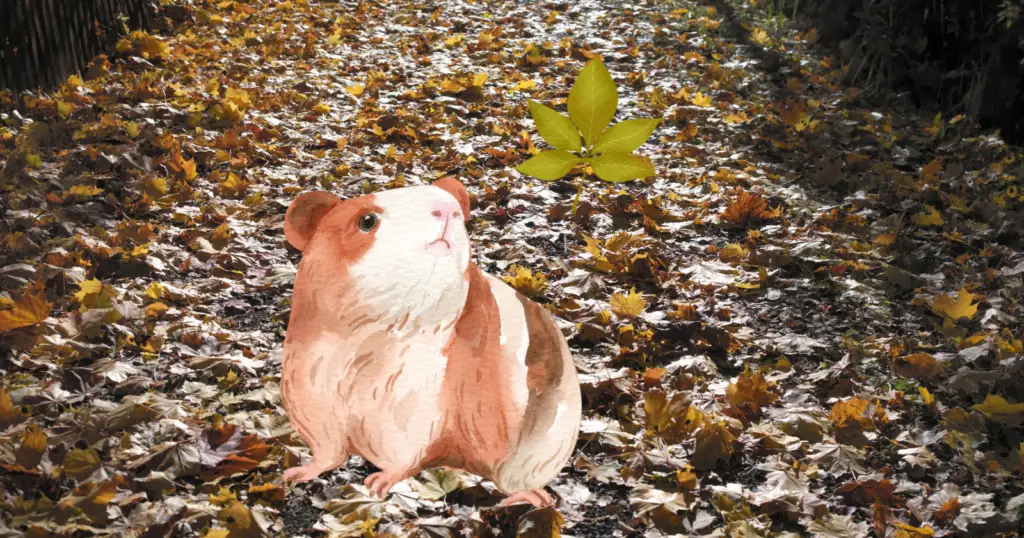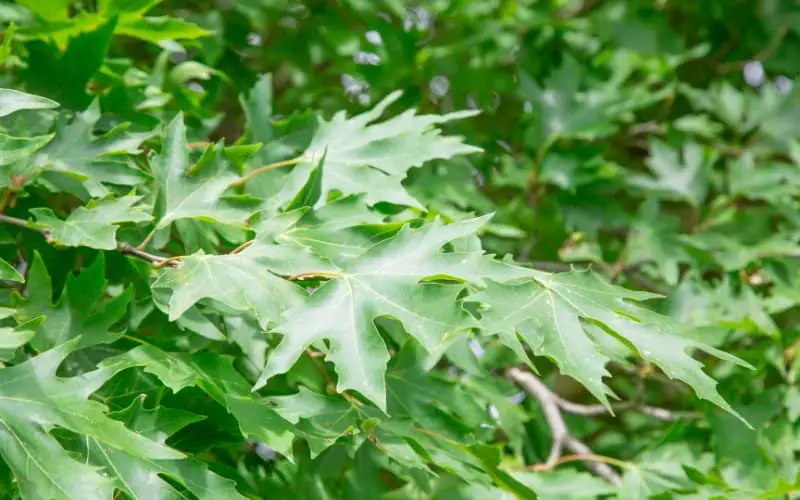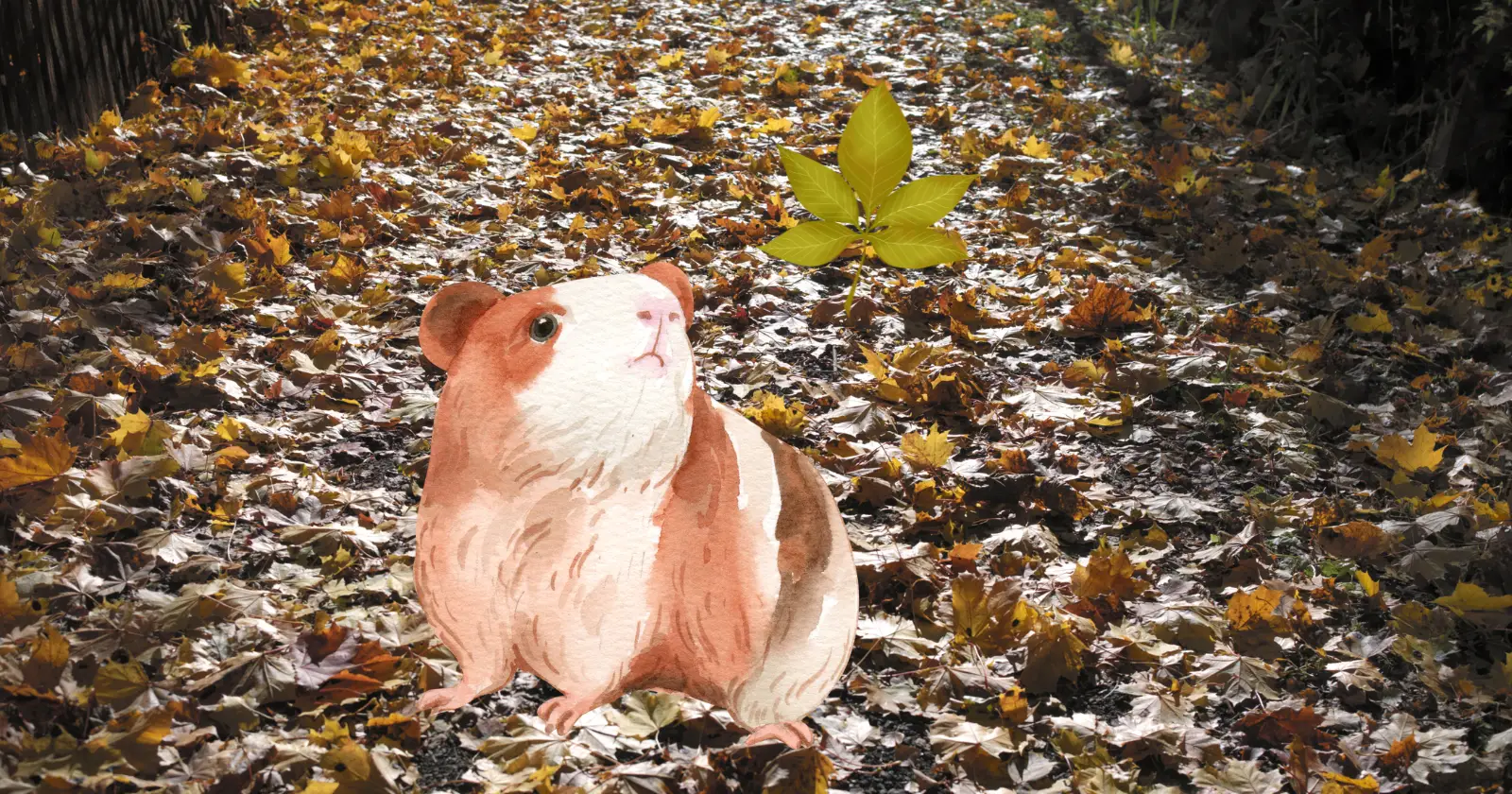Can guinea pigs eat Maple leaves? No, Maple leaves are toxic to guinea pigs, so you don’t want to feed your precious animal with that, except you’re ready to bury it.

In this article, Can Guinea Pigs Eat Maple Leaves, we will be going through a Guinea pig’s relationship with Maple leaves together. Apart from that, you’re also going to learn about some other leaves that you should never feed your guinea pigs. Let’s get started!
What Are Maple Leaves?
People generally plant maple trees because they work perfectly as shade, specimen trees, and shades. They are famous for their autumn colors; many Maple species display browns, oranges, reds, and yellows yearly.
Some Maple trees may also have leaves sporting many of these colors at once. Many Maple trees also can tolerate drought, which is another desirable trait.
A simple description of Maple leaves can be found on the Canadian flag. Have you ever seen a leaf like that? Yeah, it’s a Maple leaf. Avoid them while trying to feed your guinea pigs! The maple leaf is the characteristic leaf of the maple tree. It is the most widely recognized national symbol of Canada.
There are different types of Maple leaves out there, and it is imperative that you identify these leaves to take proper caution while scouting for guinea pig friendly leaves.
Can Guinea Pigs Eat Maple Leaves?

No, it will kill them because it is incredibly poisonous. That’s just it. There are no in-betweens here – nothing more, nothing less.
Can Guinea Pigs Eat Tree Leaves At All?
Yes, guinea pigs can eat leaves but only certain types. This means they can eat leaves only from certain trees and branches. If you cannot identify the tree, it is best to avoid feeding the guinea pig an unidentified leaf.
There are safe trees that can give the cavy some leaves to munch on. The most common leaves they can chew on are from the fruit trees. They can have an apple, pear, willow, citrus tree, banana leaves, sunflower leaves, pumpkin, mango, raspberry, grape, outer leaves of corn, cauliflower leaves, and mulberry too.
Also, they can even have certain branches, such as those of plum, cherry, apple tree branches, hazel branches, pear branches, willow, spruce, ash (tree), poplar, juniper, and hawthorn branches.
Log on to or register on The Guinea Pig Forum to read about other Guinea pig keepers’ experience and equally ask your questions about Guinea pigs and maple leaves.
Watch this video:
What Plants Are Poisonous To Guinea Pigs?
What plants are poisonous to guinea pigs?
There are many wild plants, garden plants, and weeds that are poisonous for guinea pigs, which include:
- Plants from bulbs (Onions, garlic, chives, leeks, etc.)
- Evergreen shrubs and trees (Ivy, boxwood, laurel, etc.)
- Common plants, weeds, shrubs, and trees which include:
- Acacia
- Aconite (also known as Monkshood, Wolf’s Bane, Leopard’s Bane, Devil’s Helmet, Blue Rocket)
- Anemone
- Arum
- Autumn crocus
- Beech
- Bindweed (convolvulus)
- Black nightshade
- Bluebell
- Columbine
- Corncockle (a wildflower)
- Daffodil
- Daisy
- Deadly nightshade (Belladonna)
- Dock when seeding and after seeding
- Dog mercury
- Elder
- Figwort
- Fool’s parsley
- Scarlet pimpernel (mostly found growing by chickweed)
- Scarlet runner foliage
- Snowdrop
- Sorrel
- Speedwell
- Spurge
- Yew
And the list goes on and on.
Conclusion: Can Guinea Pigs Eat Maple Leaves
Can Guinea Pigs Eat Maple Leaves? As you can see, the Maple leaf is a dangerous leaf that you should never consider feeding your guinea pigs if you genuinely care about them. There are many other leaves out there that they can eat, and Maple isn’t one of them. Therefore, try as much as possible to stay away from them. Visit ownyourpet to learn more.
